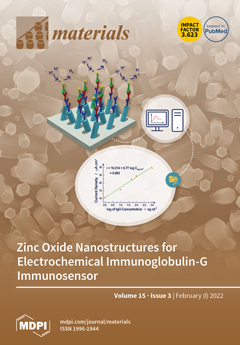Hyperesthesia is related to increased sensitivity of dental tissues to mechanical, chemical and thermal stimuli. The aim of this prospective clinical trial was to compare the effectiveness of a calcium-fluoride-forming agent (Tiefenfluorid
®, Humanchemie GmbH, Alfeld, Germany) with that of a fluoride
[...] Read more.
Hyperesthesia is related to increased sensitivity of dental tissues to mechanical, chemical and thermal stimuli. The aim of this prospective clinical trial was to compare the effectiveness of a calcium-fluoride-forming agent (Tiefenfluorid
®, Humanchemie GmbH, Alfeld, Germany) with that of a fluoride varnish (Enamelast
TM, Ultradent Inc., Cologne, Germany) in the treatment of dental hyperesthesia in adult patients. In total, 176 individuals (106 females and 70 males, aged 18–59 years old) diagnosed with dental hyperesthesia (DH) were enrolled. The main clinical symptoms were hyperesthesia from coldness and sweetness during chewing; the types of clinical lesions were also determined and recorded. The patients were selected randomly and divided into two groups: (i) the first group of 96 patients was treated with Tiefenfluorid
® applied in three appointments at 7-day intervals; (ii) the second group of 80 patients was treated with Enamelast
TM, applied seven times at 7-day intervals. All the patients were recalled 7 days, 14 days, 1 month, 3 months, and 6 months from the last application. At the baseline and during every follow-up visit, the DH was measured with a pulp tester. A random intercept/random slope model was used to evaluate the effect of the treatment, at various times with respect to the initial diagnosis. Within the limits of the present study, Tiefenfluorid
® was more effective than Enamelast
TM against DH in that it provided long-lasting results, with a significant improvement still detected at the latest 6-month follow-up.
Full article






